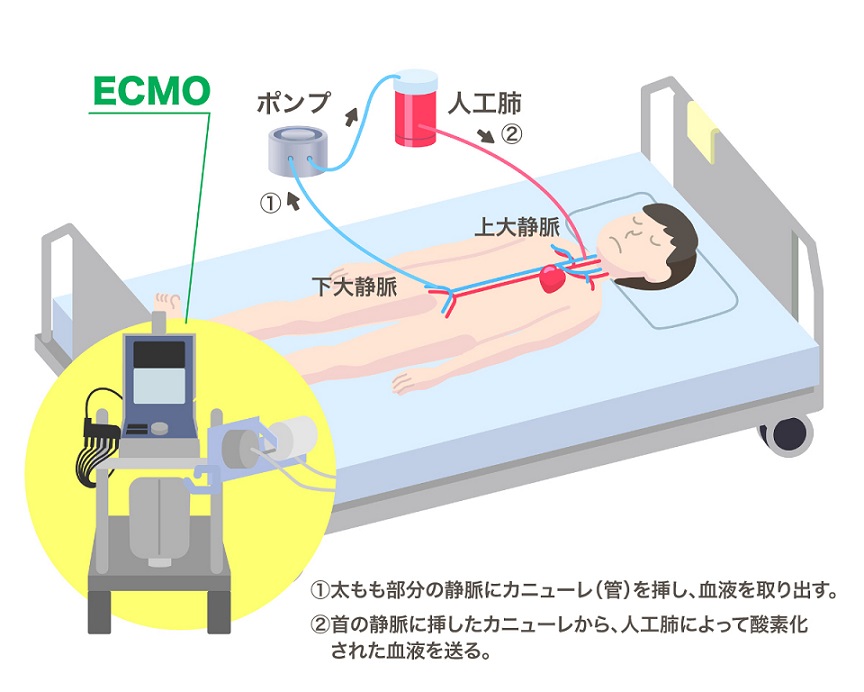
Release date: 2020.12.04
The epidemic of new coronavirus infection has reached the "third wave", and the number of newly infected people is increasing rapidly, and the number of patients who are becoming more severe is conspicuous. The "last trump card" for these critically ill patients is called the ECMO (Extracorporeal Membranous Oxygenation), a device that substitutes for lung function.

In severely ill patients with new coronavirus infections, respiratory failure due to severe pneumonia sometimes occurs, so a ventilator is used to force a high concentration of oxygen into the lungs to assist in breathing. However, when pneumonia worsens, the alveoli are severely damaged, resulting in insufficient oxygen uptake. In such cases, ECMO is required to replace lung function outside the body, take oxygen into the body, and temporarily rest the lungs.
To perform ECMO treatment, a thick tube called a cannula is inserted into the vein at the base of the thigh to remove blood from the body and pass it through a circuit using a centrifugal pump. Then, oxygen and carbon dioxide are exchanged in the artificial lung and returned to the vein of the neck where the cannula was inserted (Fig.) The cannula is inserted under fluoroscopy of X-rays and ultrasonic waves, but high technical ability is required. increase.
The artificial lung reproduces the same principle as the alveoli. Many tubes pass through the artificial lung through which blood passes, and high-pressure oxygen flows through them. Oxygen, which is abundant in this tube, flows to the blood side, and carbon dioxide, which is abundant in blood, flows to the tube side.
Since ECMO is a special treatment (extracorporeal circulation) that removes blood from the body, it is said that various complications such as infectious diseases, thrombosis, and renal failure are likely to occur. Anticoagulants are used to prevent blood from clotting in the artificial lungs and circuits, increasing the risk of cerebral hemorrhage. In addition, if there is a problem such as the cannula coming out of the body or the cannula being clogged with blood while using ECMO, blood circulation may be impaired and there is a risk of death. For this reason, monitoring such as monitors is required 24 hours a day, and 10 or more people such as doctors, nurses, and clinical engineers who are familiar with ECMO must work as a team. The duration of treatment can be several weeks or longer.
According to the Japanese Society of Intensive Care Medicine and others, it is reported that by April 20, this year, 90 severely ill patients infected with the new coronavirus were equipped with ECMO, and about 70% of the patients who completed the treatment recovered.
Currently, there are about 1,400 ECMOs nationwide, but it is said that the number of medical professionals who can manage ECMOs is small. As the number of severely ill patients with coronavirus infection increases, increasing the number of medical professionals who are proficient in ECMO will be the key to saving the severely ill in the future.
MEDIUS Group is developing a business centered on the sale of medical equipment. We (Medical + us) involved in medical care also want to play the role of an information source (Media) that delivers useful information for the medical field and people's healthy tomorrow.